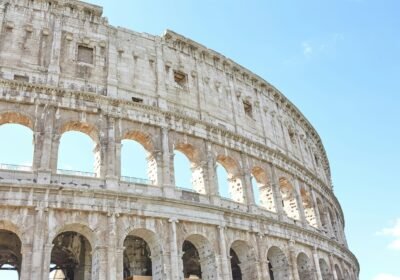Unraveling Grenada: A Journey Through History, Architecture, and Cultural Impact
The Origins of Grenada: Historical Roots and Development
Grenada, known as the “Island of Spice,” boasts a rich history that traces back to its indigenous populations, primarily the Arawaks and Caribs who inhabited the island long before European explorers set foot on its shores. The island’s recorded history began in earnest when Christopher Columbus arrived in 1498 during his third voyage to the New World, marking a pivotal moment in Grenada’s narrative. He named the island “Concepción,” yet it remained largely uninhabited by Europeans for several decades following this discovery.
The early 17th century saw the first significant European settlement attempts led by the French in 1650. Their influence was profound, as they established sugar plantations, introducing enslaved Africans to work the land. This marked the beginning of a socioeconomic structure that would dominate Grenadian life for over two centuries. By the late 18th century, control of the island shifted between the French and British, encapsulating the turbulent colonial history that ultimately shaped Grenada’s identity.
Key historical events, including the abolition of slavery in 1834, catalyzed significant social changes. Former slaves and their descendants began asserting their rights and gradually acquiring land, which transformed land ownership dynamics. The struggle for political representation gained momentum throughout the 20th century, ultimately leading to Grenada’s declaration of independence from British rule in 1974. This transition signified a culmination of centuries of colonial influence, resistance, and a burgeoning national identity.
Today, visitors to Grenada can appreciate the remnants of this rich history through its well-preserved architecture, vibrant culture, and historical sites. From colonial buildings to monuments commemorating the island’s tumultuous past, Grenada’s evolution reflects a narrative interwoven with resilience and adaptability. Its complex origins continue to influence the island’s cultural landscape, making it a compelling destination for those seeking to understand its significance within a broader historical context.
Architectural Heritage: A Reflection of Grenada’s Past
The architectural landscape of Grenada is a tangible reflection of its rich and multifaceted history. The island’s heritage showcases a blend of colonial styles and Caribbean vernacular architecture that articulate the influences of various cultures over time. The capital city, St. George’s, stands out with its distinct Georgian architecture, characterized by formal, symmetrical designs that were prevalent during the British colonial era. Noteworthy structures such as the House of Parliament and the courthouse exhibit classical features, which speak to Grenada’s colonial past and its connection to British architecture.
Another exceptional landmark, Fort George, built in 1705, serves as a critical historical structure representing Grenada’s military significance during colonial conflicts. This fortress not only offers panoramic views of the harbor but also stands as a reminder of the tumultuous history surrounding European colonization. The fort’s robust stone walls and strategic design reflect the necessity for defense against foreign invaders, encapsulating a piece of Grenadian history that is profound yet often overlooked.
Additionally, the influence of Caribbean vernacular architecture is evident in the traditional wooden houses found throughout Grenada, particularly in rural areas. These structures, typically elevated on stilts, feature vibrant colors and ornate detailing. They embody the skills and resources of the local craftspeople while reflecting the island’s resilience and creativity. The architectural styles are decidedly diverse, showcasing the fusion of African, European, and indigenous influences that have shaped Grenada’s identity over centuries.
As the island has evolved, so too has its architecture, which continues to represent both its historical significance and cultural impact. The ongoing preservation efforts highlight the importance of maintaining these structures for future generations, allowing visitors to experience the rich tapestry of Grenada’s past. Visitors today can immerse themselves in this architectural journey, making the exploration of Grenada’s built heritage an essential aspect of understanding its history and cultural identity.
Cultural Impact: Festivals, Traditions, and Notable Figures
Grenada is a nation enriched with dynamic cultural expressions that play a crucial role in shaping its identity. The island’s festivals and traditions showcase a vivid tapestry of influences, reflecting its historical journey and contemporary society. One of the most significant celebrations is the annual Carnival, known locally as ‘Spicemas.’ This vibrant festival encapsulates the island’s history, combining African, French, and British elements. Visitors can experience an array of colorful parades featuring ornate costumes, rhythmic calypso and soca music, and infectious dance. This festival not only acts as a celebration of life and community but also as a remembrance of Grenada’s colonial past, symbolizing resilience and unity.
The cultural impact of Grenada extends into other notable traditions such as the celebration of Independence Day, observed on February 7th, which commemorates the nation’s liberation from colonial rule. It is marked by ceremonies and patriotic displays, reinforcing national pride and identity. Additionally, the tradition of storytelling, deeply rooted in the island’s history, remains significant, as it serves to pass down invaluable oral histories and folklore that enrich the Grenadian cultural landscape.
Key figures, such as Herbert Blaize and Maurice Bishop, have significantly contributed to the island’s socio-political framework. Blaize, a national leader, played a pivotal role in shaping Grenada’s government, while Bishop was instrumental in advocating for the rights of Grenadians during his tenure. Their legacies continue to inspire discussions about leadership while igniting social action, showcasing how Grenadians learn from their past and strive for a better future.
Art and literature also hold a place of importance in Grenada’s cultural impact. From renowned authors to local artisans, the creative expressions of the Grenadian people reflect their history and aspirations. Thus, as we explore Grenada’s cultural identity, it becomes evident that these elements not only highlight the island’s historical significance but also play an essential role in enhancing its contemporary relevance.
Experiencing Grenada Today: Key Attractions and Significance
Grenada, often referred to as the “Spice Isle,” presents a rich tapestry of experiences that transcend its historical significance, architecture, and cultural impact. Visitors to Grenada encounter a unique blend of stunning natural beauty, rich history, and vibrant culture that captivates the senses. One of the must-visit locations is Grand Anse Beach, renowned for its powdery white sands and turquoise waters. This picturesque spot invites both relaxation and adventure, making it a perfect destination for sunbathers and water sports enthusiasts alike.
In addition to its breathtaking beaches, Grenada offers a culinary journey that can be explored at places like the Grenada Chocolate Company. Here, tourists can indulge in premium chocolate made from local cocoa beans, reflecting the island’s agricultural heritage. Visitors are welcome to take guided tours where they can learn about the chocolate-making process, from the bean to the bar, and enjoy tasting sessions that celebrate Grenada’s unique flavor profiles.
The island’s national parks, such as Grand Etang National Park, further enhance the visitor experience by showcasing Grenada’s natural landscapes, wildlife, and biodiversity. Hiking trails within these parks lead to breathtaking views, waterfalls, and rich flora, making each trek a fascinating exploration of Grenada’s ecological significance.
Moreover, Grenada remains committed to conservation efforts, which play a crucial role in preserving its historical and natural treasures. Such initiatives not only protect the environment but also ensure that future generations can appreciate the island’s unique cultural heritage. The dynamic blend of history, architecture, and natural beauty reveals why Grenada is a prime destination for both history enthusiasts and travel lovers. As Grenada continues to evolve, it stands as a testament to resilience and cultural richness, making it a must-visit location for anyone looking to connect with its vibrant past and present.









